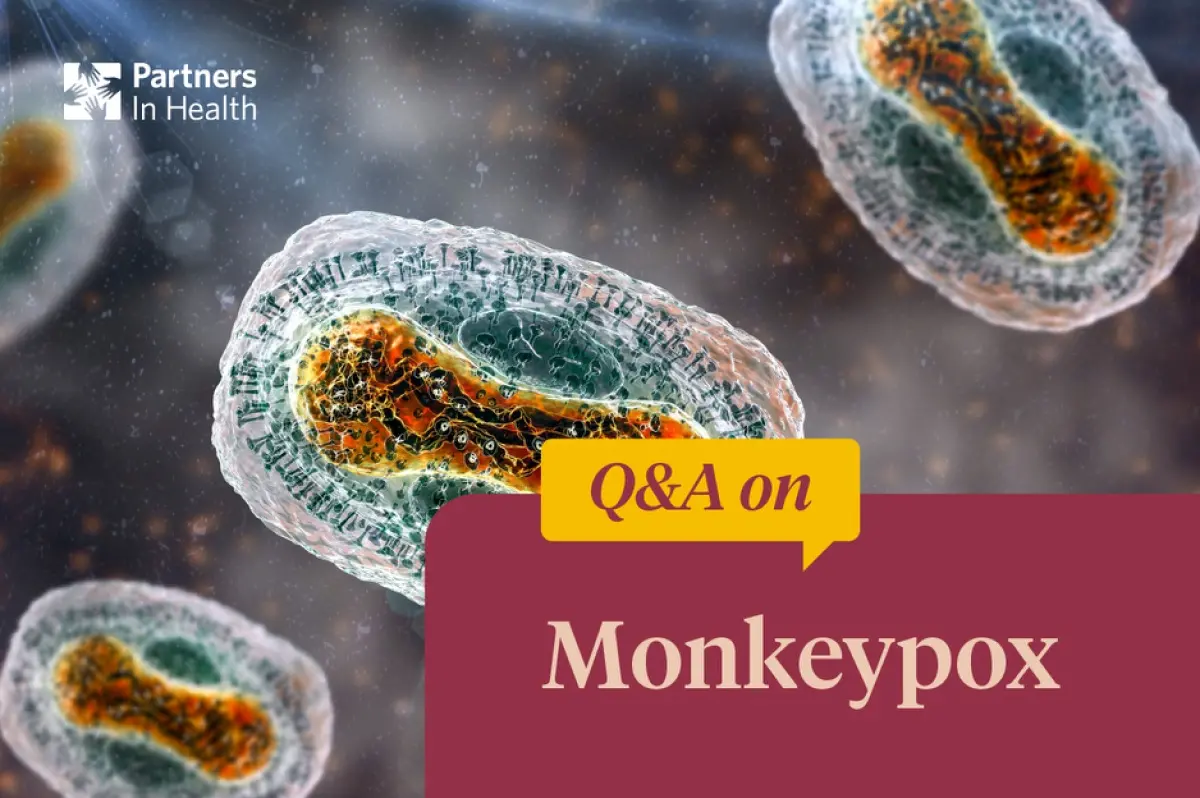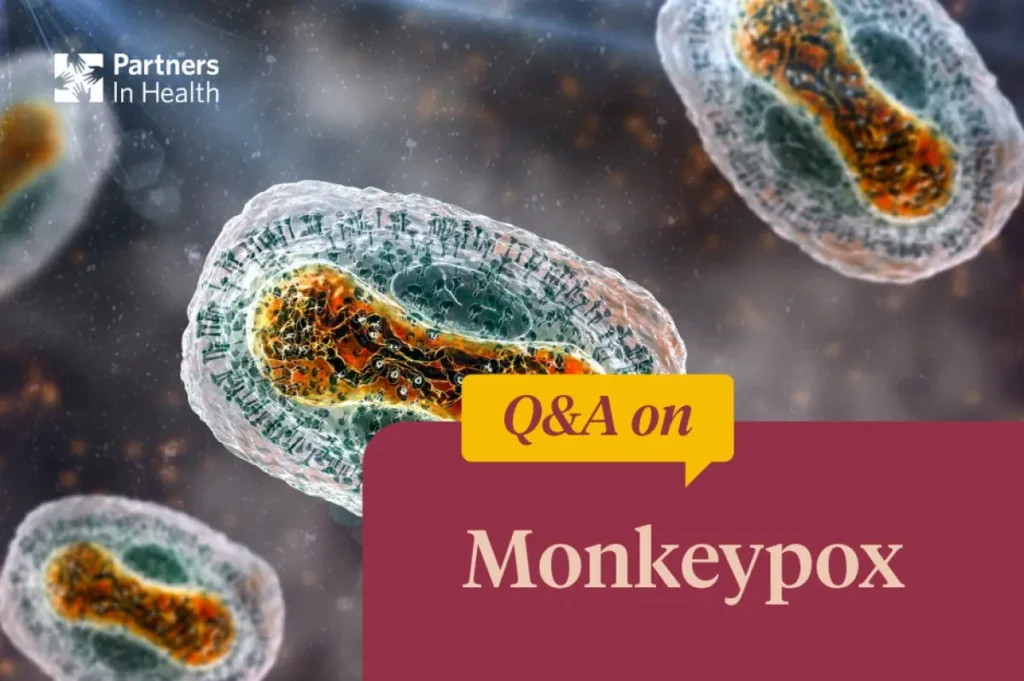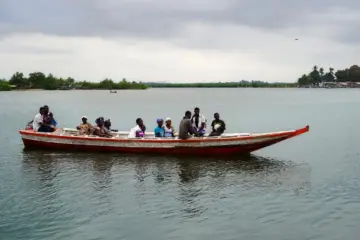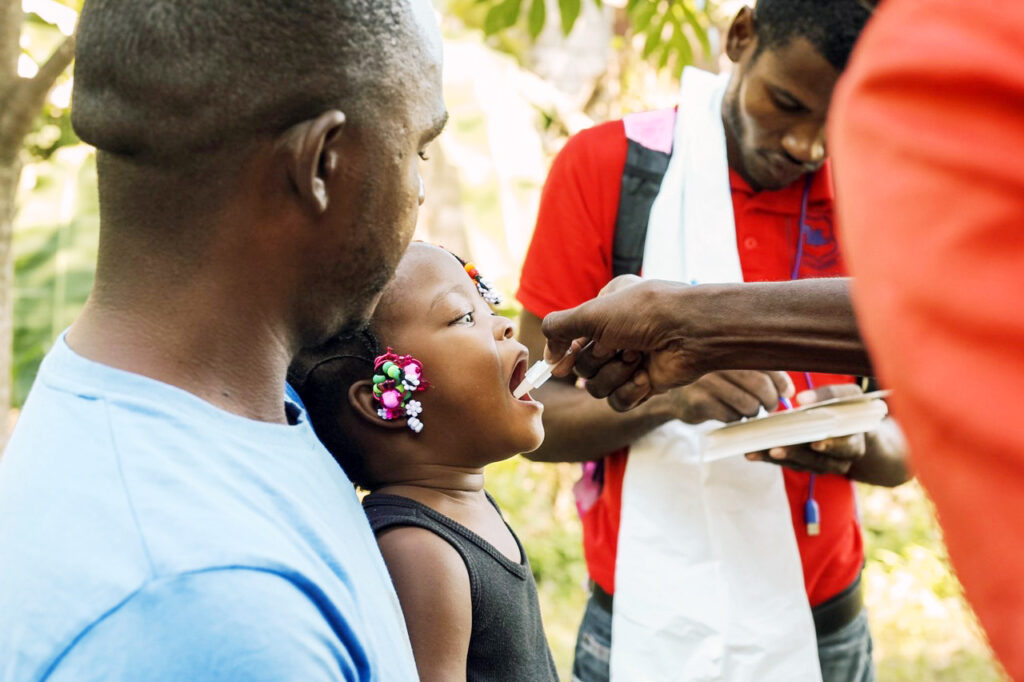How This Monkeypox Outbreak is Unique

PIH infectious disease expert on lessons learned, access, and equity around virus
Posted on Aug 8, 2022

Dr. Marta Lado still remembers the early days of the Ebola outbreak in Sierra Leone—how patients needlessly died of the disease and suffered stigma, discrimination, and lack of access to lifesaving medical care. Now, the infectious disease specialist is watching some of those same patterns repeat with monkeypox.
While not usually fatal, monkeypox has led to more than 28,000 cases worldwide. Typically confined to West and Central Africa, the disease has since spread to 81 countries where it was not historically detected. Monkeypox is known for painful lesions and rashes and is usually spread through skin-to-skin contact.
PIH has responded to infectious diseases for decades, from HIV to Ebola to COVID-19. Lado is no stranger to outbreaks either.
Now PIH’s cross-site clinical advisor, Lado was formerly chief medical officer with PIH Sierra Leone, where she helped lead the response to Ebola in 2014 and was integral to caring for patients, fighting stigma, and building up the health system in the years that followed. Lado has also brought her expertise to the World Health Organization as a case management expert and in 2019 authored Ebola Virus Disease: A Manual for EVD Management.
Drawing on her years of experience fighting infectious diseases, Lado shares her insights on monkeypox—and what must be done.
Monkeypox isn’t a new disease. It’s been around since the 1970s. What’s so alarming to you about this current outbreak? What are we seeing that we haven’t seen before?
There are two main points that we should be bringing up. One is we have had reports of monkeypox in several Central African and West African countries since the 1970s, and it was more localized in those regions. This is the first time that we are seeing very intense, rapid community transmission in countries that normally had never been affected by this.
This is exactly what global health implies: it’s not like this disease is happening in one region and it’s not going to affect me at any point. With Ebola, with COVID, and other things, we are seeing that this idea of creating regions to divide diseases is not valid anymore. We are living with globalization in terms of movement of people and this is also going to affect health.
The second point is that the clinical presentation that we are seeing right now is a different from what we historically saw in Central and West African countries. Normally, in these endemic countries there were symptoms like fever, weakness, headache, myalgia, and then one rash that started in the face and went to the trunk. [The virus] disseminated quite fast and in certain populations like children and the immunosuppressed.
This was the picture that we had of monkeypox until now. Now, in the outbreak that started in Europe and disseminated everywhere, what we are seeing are symptoms more localized in one region [of the body]. So that’s why we are seeing a lot of infections that happen in the context of sexual contact or very close contact. We’re seeing lesions in the parts of the body that have been in close contact with the person who was infected.
PIH has responded to many pandemics and epidemics around the world, and monkeypox is just the latest virus to capture global attention. What are some of the lessons learned from our past responses that could be relevant and useful now?
There are two main outbreaks that we worked on—one was Ebola. What we can learn from our Ebola experience is that the work to prepare and respond to any kind of health emergency like this is based on comprehensive work between different teams. We need to be focusing our attention on surveillance—being able to identify potential cases and doing contact tracing and follow-up. We also need to focus on diagnosis. We have learned a lot [from Ebola] about how to do testing. Then there’s case management. We have learned quite a lot about how to manage diseases that develop complications and how to care for patients who develop shock, multiple-organ failure, superinfections, etc.
Then lastly, community engagement. We have been extremely good in our Ebola work at sending messages to the community and receiving feedback, as well as reducing the stigma against Ebola survivors. So these four main pillars are extremely important: contact tracing, testing and laboratory capacity, case management, and community engagement.
With COVID, our work [across these four pillars] has excelled even more. Paul was always repeating that we need to be able to deliver the same standard of care in low-income countries and high-income countries. If a patient is in a critical condition, we need to be able to strengthen the [health] systems to manage them. With monkeypox, a very small amount of patients get very sick. It’s not as much as in COVID and even much, much less than Ebola. But it’s still killing quite a lot of people in African countries.
Diseases like monkeypox have affected impoverished countries for years, even decades, with hardly any attention from the West. What do you make of this sudden urgency around monkeypox? How does global injustice factor in?
We are now living in a moment of great awareness of infectious diseases. We have information in real time about what is happening in different countries—like whenever you have a cluster of cases in this country, you are able to receive information about what is going on in neighboring countries or even very remote countries. I think it’s a positive thing, because it means that we are creating more surveillance and more detection.
But as a global health specialist, I strongly think that we also need to start involving more countries that have been suffering these diseases for longer periods, but didn’t have strong scientific communities or health care systems to deal with them in the same way as high-income countries. Monkeypox has been not only a threat but a reality for many countries—people getting sick and dying and vaccination programs and treatments and everything being delayed. When it started happening in high-income countries, everything got triggered and now it’s a big thing and everything is accelerated.
I tend to look at the positive side, which is: let’s use this as an opportunity to advocate for the development of all these different elements, like surveillance and treatment and community engagement, so we can extend them to other countries that don’t have as strong of health care systems. The more we improve our laboratory and surveillance capacity, the more we will start seeing more cases in low-income countries. We will need to have all these things ready to be able to help them deal with it.
With diseases that are spreading globally like this, we’ve often seen marginalized communities blamed and stigmatized. We saw this with HIV/AIDS, Ebola, and COVID-19. We’ve seen this same trend start to happen with monkeypox. How do we spread awareness about this disease while also fighting against stigma and discrimination?
One of the things we need to acknowledge is that the first cluster of cases started in one specific community—gay and bisexual men. This is quite tricky because it can lead to stigmatization and to associating the disease with this population. We have a bunch of cases in this community, but there is no clear evidence that it can only affect this population. The spread in this community has been very fast and the infection rate has been quite high in terms of number of contacts. But we don’t have any evidence to think that this cannot go to other populations, like children, pregnant women, patients with chronic diseases, etc.
We need to be very careful with how we are communicating about this monkeypox outbreak, because it’s very easy to repeat the mistakes that we made when HIV emerged in the ‘90s. Now, we all know that HIV can affect anyone; it’s not related to your sexual preference. It’s more related to some kind of sexual contact. We know that monkeypox is transmitted by close contact. But it could also be transmitted by droplets—it could stay in the air and be inhaled. This is not only a sexually transmitted infection. It is an infection that is transmitted face-to-face and skin-to-skin and needs to be taken as that.
PIH has been calling for vaccine equity for decades for many different diseases and conditions. How is the issue of vaccine equity showing up with monkeypox?
The vaccines that are available for monkeypox were actually created for smallpox. After the eradication of smallpox in 1980, the quantities produced were quite small because the idea was that there could be some kind of bioterrorism threat. So those vaccines were produced, but with the idea of keeping them within the government. The thing is, smallpox and monkeypox are very similar. They belong to the same family, and the smallpox vaccine has around 85% efficacy against monkeypox.
Scaling up production of these vaccines may take time. It’s important to engage in advocacy. Vaccine production is not only about the current outbreak. There are several countries that have cases on an annual basis, and we need to produce more vaccines to be able to control the rate of infections.
In terms of equity, we’re in a moment where we have only a small amount. So we need to select which populations to prioritize. The populations that were prioritized historically were health care workers. But now, in the current outbreak, there is general concern and calls for advocacy to create more vaccines. Right now, we have one specific group with the infection, but the moment it starts spreading to other groups, we are going to need more vaccines. So our advocacy needs to go for increasing the production to be able to cover as many groups as possible.
Right now, the global conversation around monkeypox seems to be focused on vaccines or educating the public. How do you see the global response to this developing—what’s the next chapter, and how do you see PIH being part of that?
Right now, the response is focused on specific countries and on a specific population. But we forecast that this may start affecting different populations and spreading more widely. It will be important to get clear guidance on who to vaccinate, who to treat, and what drugs to use for both, as well as to have these treatments accessible to all for free.
The way that I see PIH working is in advocating for equity and communicating that this is an infectious disease that could affect anyone. Right now, it’s in a specific group, but it could extend to other groups very soon. So we need to increase awareness and continue advocating for surveillance, testing and laboratory capacity, case management, and community engagement. Also, as an organization that works mainly in low-income countries, we need to raise our voice even more to ensure that there is equitable access to medications and vaccines.
As PIH, we need to continue supporting the most vulnerable. And we need to think longer term about what happens if this starts becoming more global, and we start identifying more cases in the countries where we work.
Originally published on pih.org



